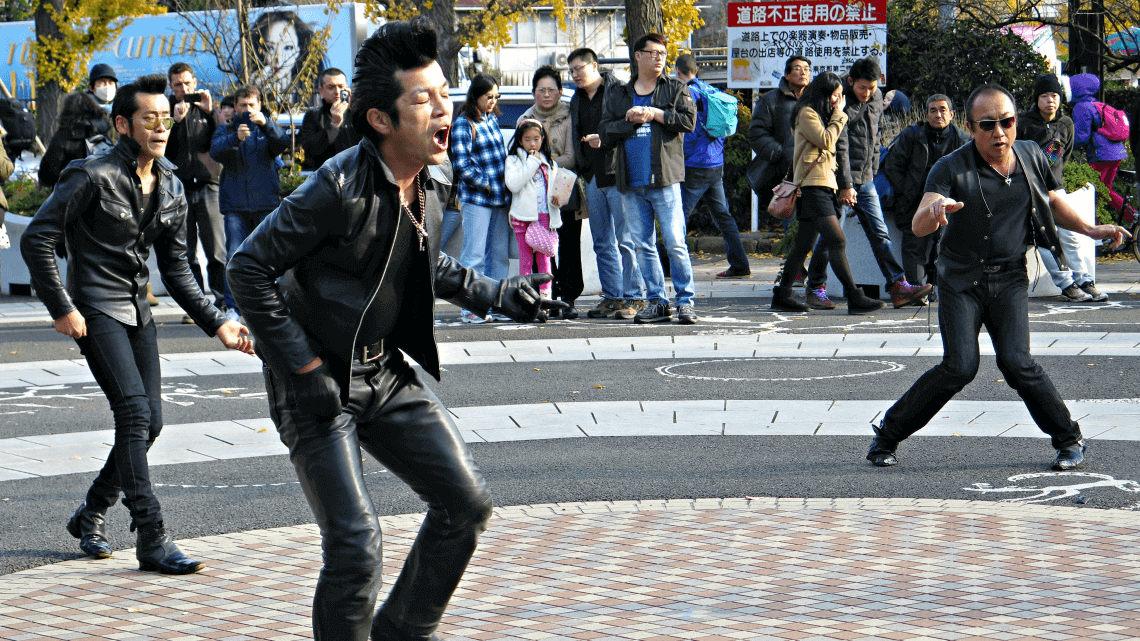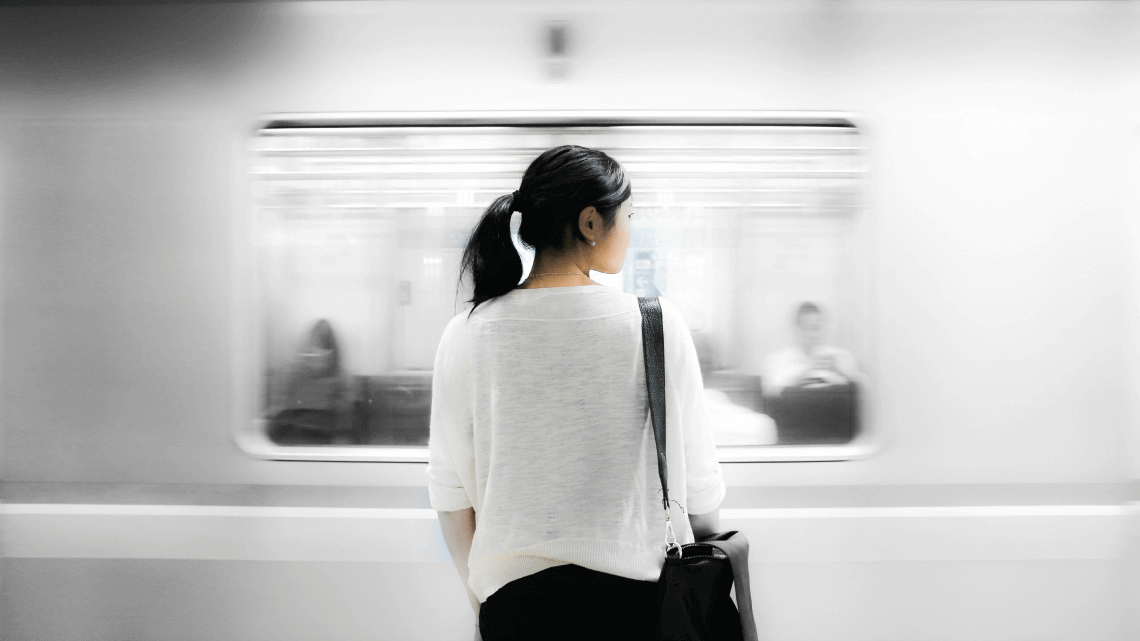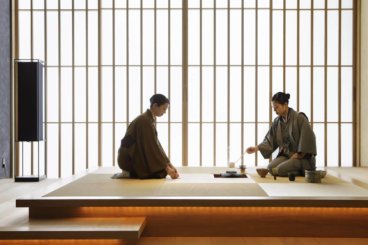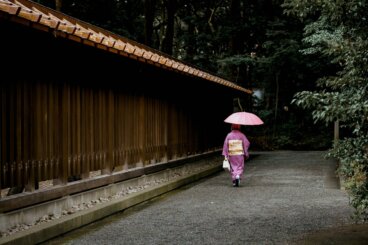If you’ve never traveled to Japan, you can certainly be forgiven for not knowing what to expect – and probably having some misconceptions about what Japan is really like!
Most visitors to Japan are surprised to find out that these common myths are either grossly exaggerated, or simply not true.
So while it’s not possible to fully prepare you for the surprises (and culture shock) you’ll likely experience during your trip, we hope this helps you move on from worrying about the prices and etiquette, to more exciting topics such as where to visit and what to do!

When visiting Japan for the first time, some culture shock is guaranteed.
Fortunately, most of the surprises are positive. For example, here are some of the most common things we hear from travelers:
- “The food is even better than expected!”
- “Japanese people are so amazingly kind and helpful.”
- “It’s so clean and safe!”
But chances are you also have some concerns about traveling around Japan.
We’ll start with the one we hear most often, even from the most experienced world travelers.
1. Japan is Very Expensive
By far one of the most common and pervasive myths about Japan is that it’s prohibitively expensive.
The truth is that, even when the Japanese Yen is fairly strong, Japan is simply no longer one of the world’s most expensive destinations.
Japan is not cheap, and compared to some of the countries nearby, such as Thailand and Vietnam, it is relatively expensive.
Also, even today Tokyo consistently ranks as one of the world’s most expensive cities in a variety of surveys and studies carried out throughout the world.
Yet despite all of this, traveler after traveler we speak with tells us the same thing after visiting Japan for the first time:
“It was so much less expensive than I had expected.”
Why the consistent disparity between expectation and reality?
Particularly in the 1980s and 1990s, Japan was in fact extremely expensive, but even though that time has passed, its reputation has stuck.
While it of course varies, and also depends on external factors such as constantly fluctuating exchange rates, here is a small sampling of countries that are typically more expensive than Japan when it comes to on-the-ground travel expenses:
- Switzerland
- England
- Norway
- Singapore
- Australia
Of course, Japan can be expensive depending on your tastes and spending habits.
For those able and willing to partake in the best of the best that Japan has to offer (in terms of food, shopping, luxury travel experiences, and more), it’s easy to spend significant amounts of money in Japan.
But Japan doesn’t have to be expensive, and one of the great things is that you can tailor your experience to your budget. We go into more detail about this in our article on how expensive (and inexpensive) Japan really is.
For example, it’s up to you whether to spend:
- $200 on a meal at a Michelin-starred restaurant
- $15 on a healthy and delicious teishoku, a “set” meal usually featuring rice, miso soup, and a main such as fish or a meat
- $8 on a bowl of ramen
- $4 on a simple bowl of soba or udon noodles
Budget travelers can make use of websites such as Tokyo Cheapo (run by Tokyo-based friends of ours), Japanese Guest Houses, and many more.
See our post on the Internet’s best Japan-related resources for a treasure trove of free online information.

2. It’s Difficult to Get Around if you Don’t Speak Japanese
The Japanese language can seem pretty intimidating.
It’s widely considered one of the world’s most challenging languages to learn, and doesn’t appear to come naturally to most English speakers.
So it’s not surprising that the perceived language barrier is one of the concerns most often voiced to us by clients and friends planning trips to Japan.
Apart from the fact that most people who travel to Japan (including basically 99% of our travelers) don’t speak a single word of Japanese, this concern also stems in part from a common misperception that Japanese people don’t speak English.
But we have good news! While this myth is not wholly untrue, the gist of it is way off.
The truth is that even if you don’t speak a lick of Japanese, getting around Japan is surprisingly easy, and almost definitely less challenging than you might expect.
Let’s face it: most of you probably won’t have time – or perhaps are simply not interested in – learning the language before you go (though if you are, make sure to download our free Tiny Phrasebook for Japanese).
So, without the ability to speak the local language, you – like most travelers – are probably for the most part placing yourself in the hands of the Japanese people.
You’re in luck.
Japan is surprisingly easy to navigate, thanks to the combination of:
- Remarkably high levels of safety
- Genuinely kind and helpful locals
- Extraordinarily efficient and reliable transport systems
- Relatively widespread (and steadily-increasing) English-language signage
Of course, these are all part of what makes Japan such a family-friendly destination, as well.

As for whether English is widely spoken in Japan or not: native-level fluency is not widespread, but the baseline level of English is relatively high, thanks to the fact that everyone studies English in school.
As anyone who has ever studied a language in school knows, it’s not typically the best way to fully learn a language. In my personal experience, I studied Japanese for years before visiting Japan. When I arrived, I discovered (to my surprise) that, despite all my classroom studies, I could barely form a coherent sentence in real-world situations (this is why I spent my first few weeks in Japan accidentally informing convenience store clerks that I didn’t need a bath [furo], rather than a bag [fukuro]).
But even if learning a language in the classroom isn’t the best way to master it, it’s far better than nothing, and most Japanese people possess at least basic, if not intermediate or advanced, English-language skills.
Here is how our very own Piper Christian described her first time in Japan (having visited with only a couple of words and phrases in her repertoire):
“The language barrier is legitimate, but also not insurmountable. I was surprised at how easily I could navigate, and how friendly people were with trying to help, even if all I could say was sumimasen [excuse me].
“I had quite a few essentially wordless conversations where people pointed in me in the right direction:
- Piper: Sumimasen [point to my train ticket]
- Friendly non-English speaking Japanese person: [Looks at ticket, points out where I need to go]
- Piper: Arigato gozaimasu.”
So while it’s safe to assume you will, at some point, get lost while making your way around Japan (it happens to everyone), this is rarely a cause for concern.
Also, keep things in perspective and don’t forget that most Japanese people are drastically better at English than you are at Japanese (unless you’re one of the rare few who speaks Japanese), so be appreciative!
Of course, the ability to speak Japanese does open additional doors, and gives you access to a greater number of local spots – for example, izakayas with no English menus – so there is certainly benefit in having private (or even small-group) guides and experiences for additional immersion.
However, it’s not absolutely necessary for a rich and full Japanese experience.
3. You’ll Offend Everyone if You Don’t Learn Japanese Etiquette
Ah, the thorny world of Japanese etiquette.
Japanese etiquette is so complex, and has so many layers, that even Japanese people often commit an inadvertent faux pas.
Going far beyond simple rules like taking off your shoes when entering a tatami room, you could devote your whole life to trying to master Japanese etiquette.
Fortunately, unless you are a business traveler (if you are, please accept our sincere apologies, but the below doesn’t fully apply to you), you can keep it simple and learn just one overarching rule:
Observe, listen, be polite, and apologize.
The truth is that Japanese people don’t necessarily expect foreign visitors to have mastered all the intricacies of Japanese etiquette. As long as you keep this one rule in mind, chances are you will do great.
In Japan, politeness and etiquette are highly valued, so even if you don’t learn all the rules, you can act harmoniously by observing and listening to your surroundings, always being polite, and apologizing (to really impress your hosts, say sumimasen) when you accidentally or inadvertently make an etiquette mistake.
The reason this one, simple etiquette principle works on the whole is because, unless you’ve done something egregiously offensive – such as acting rudely, behaving loudly or obnoxiously, or being blatantly disrespectful in some way – most etiquette “mistakes” are easily forgivable and can often even simply be laughed off.
As Piper-san puts it:
“It’s very important to be culturally sensitive, and Japanese people really appreciate visitors making an effort.
“But I think that most people worry too much about breaking etiquette rules (and being offensive), while in actuality Japanese people don’t generally expect foreigners to know all the rules, and are quite generous and lovely, even when you make a ‘mistake.’”

4.: Japanese People Eat Sushi All the Time
When most travelers (especially food-loving travelers) think of Japan, one of the first things that comes to mind is sushi.
After all, apart from being one of the world’s most perfect foods, sushi is without a doubt the most prevalent Japanese food consumed outside of Japan.
But the truth is that sushi is far from an everyday food in Japan, and – perhaps surprisingly – most Japanese people don’t eat sushi very often.
Apart from the fact that sushi has risen from its origins as a humble snack to an exalted element of Japanese cuisine, there is a very practical explanation for why Japanese people don’t partake in sushi every day.
Japanese cuisine is astoundingly varied, and with so many wonderful foods to eat, why would you eat the same one over and over?
For more surprising tidbits about sushi, see our article on common myths about sushi.
Speaking of Japanese food…
5. Kobe Beef is the best-quality Beef in Japan
Kobe beef is a seriously impressive brand.
It’s so imprinted on the popular imagination that Kobe has become nearly synonymous with quality when it comes to beef, even outside of Japan.
But the truth is that Kobe beef is just one of several brands of top-quality wagyu (Japanese beef).
As John Cecala so succinctly puts it: “All Kobe is Wagyu, but not all Wagyu is Kobe.“
Whether Kobe beef is the world’s – or even Japan’s – best beef is subjective, but there is little doubt it’s the best marketed.
The brand has such cachet that it appears on menus throughout the world – even when the product being served is not, in fact, actually Kobe beef (or even wagyu)!
According to writer Larry Olmsted, author of Real Food, Fake Food, most people outside of Japan who think they’ve eaten Kobe beef are in for a disappointing surprise (I won’t spoil it for you, but here is an excellent article on Kobe beef, in case you don’t read the book).
The good news is you can readily eat Kobe beef, and other types of top-quality wagyu, throughout Japan – and there is no need to go to Kobe to do so.
6. Tokyo is Incredibly Crowded & Chaotic
You’ve seen the images, most likely of the iconic Shibuya crossing in the heart of Tokyo.
Or heard stories of rail employees entrusted with the job of squeezing commuters into overcrowded rush hour trains.
Chances are you’ve also read that the greater Tokyo area is the most populous metropolitan area on Earth.
Yet leave the concentrated tourist districts of Tokyo (or any Japanese city), and you may find yourself alone, wandering quiet backstreets that feel worlds apart from busy Ginza or frenetic Shinjuku.
Sadly, most average tourists never experience the tranquil side of Tokyo, a vast city that is surprisingly full of quiet, uncrowded, peaceful districts.
The same goes for smaller cities like Kyoto and Osaka, which are also full of charming, non-touristy areas where you can relax, and won’t be bombarded with neon and crowds.
Back when I first moved from New York to Tokyo, one of the first houses I lived in was in a quiet neighborhood in central Tokyo, within walking distance of the Koishikawa Korakuen Gardens, as well as the Tokyo Dome.
It certainly sounds urban (and if you look at the map you’ll find that it is), yet I lived on a quiet street, from which I heard nothing but birdsong (no cars or traffic) and the sound of a neighbor’s child practicing the piano each afternoon.
My backyard was a tiny garden with stone steps that led from my bedroom to the bath, across which I could bound each evening for my nightly soak.
During your visit to Tokyo, you probably won’t have time (or desire) to wander around normal residential areas, but you can experience the quiet side of Tokyo (and other Japanese cities) simply by walking away from major stations.
For example, leave the madness and cacophony of the area around Shibuya Station and walk north for just about 15 minutes, and you’ll find yourself in the peace and quiet of the charming Tomigaya district, where you can pop into a place like Fuglen for a coffee or cocktail, or wander into Yoyogi Park.
This “trick” works in cities throughout Japan, so if you want to see why Tokyo was named the world’s most livable city in 2016 by Monocle Magazine, put on your walking shoes and step away from the tourist centers.

7. Cherry Blossom Season is the Best Time to Visit Japan
I won’t lie: cherry blossom season is a magical time to visit Japan.
But the truth is that it also has many downsides, and you should think twice before committing to visit during this time of year.
Perhaps after reviewing all the pros and cons, you will decide that you do want to visit during cherry blossom season, but there’s also a chance you may not.
For all the details, make sure to read the more in-depth section on spring travel in our overview of Japan’s seasons and the best time of year to visit Japan.
8. You Can Use Wi-Fi & Credit Cards Everywhere
To be fair, this may not be a myth about Japan, in particular.
But most people visiting Japan assume that Wi-Fi will be widespread, and that credit and debit cards will be accepted most everywhere.
Experienced travelers generally assume these things because, apart from the fact that they are both true – and thus safe assumptions – in most developed countries, Japan is often seen as a particularly modern, even futuristic destination.
The truth is that finding Wi-Fi in Japan, even in major cities like Tokyo and Kyoto, is much more difficult than people expect.
As for credit cards? Despite its hyper-modernity on some fronts (toilets and robots are two salient examples), Japan is primarily a cash-based society and credit cards are not always accepted.
The good news for travelers, in terms of convenience, is that both of these things are changing, and the changes have been accelerating with Japan’s recent increase in popularity (with record-breaking tourist numbers in recent years).
Despite the steady changes, however, you should still prepare to be offline more than you may be used to, unless you rent a pocket Wi-Fi device or get a SIM card – and may find yourself carrying more cash in your wallet than you normally would back home.

9. Japan is Extremely Far Away
In my experience speaking to travelers — clients, friends, and family alike — one of the most consistent misconceptions I hear is that Japan is so far away.
And because it’s thought by so many to be so far away, of course it needs to be saved for some far off time in the remote future, when you’ll finally have time for such a long, once-in-a-lifetime journey to the distant Land of the Rising Sun.
But once you look at the numbers, the truth is that Japan is much closer than most people think.
For travelers from the Americas, Japan is the first stop in Asia, and therefore serves as a layover point for many travelers continuing on to far-flung destinations such as Bali, Thailand, Singapore, and Angkor Wat.
From Australia, getting to various parts of the world involves a long journey, but fortunately Japan is essentially a straight shot north (which helps Australians avoid the jet lag that can afflict visitors from other parts of the world).
As for traveling to Japan from Europe, of course it depends on your city of origin, but for the most part a trip to Japan is about the same length as one to the US (and of course shorter than visiting Latin America, for example).
So how long does it take to fly to Tokyo?
Here are some approximate flight times to Tokyo from various cities around the world:
- Flight from New York or Boston to Tokyo: about 13-14 hours
- Flight from Los Angeles or San Francisco to Tokyo: about 10-11 hours
- Flight from Chicago or Houston to Tokyo: about 13 hours
- Flight from Melbourne or Sydney to Tokyo: about 9-10 hours
- Flight from Cairns to Tokyo: about 7-8 hours
- Flight from Auckland to Tokyo: about 11 hours
- Flight from London to Tokyo: about 11-12 hours
- Flight from Paris or Frankfurt to Tokyo: about 11-12 hours
- Flight from Mexico City to Tokyo: about 14-15 hours
- Flight from Toronto to Tokyo: about 12-13 hours
- Flight from Vancouver to Tokyo: about 10 hours
Sure, it’s not a short hop unless you’re visiting from Asia, but it’s not as far as most people tend to imagine (and I rarely hear Californians, for example, complain about how long the trip to Europe is, despite being about the same distance).
More Myths & Misperceptions About Traveling to Japan
We’re sure there are many more, and we’d love to hear from you if you think we missed any important ones!



